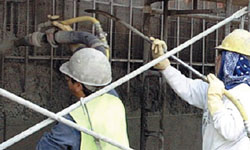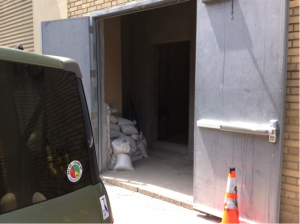
Even though this year has come with a fresh new number of challenges, it hasn’t deterred our Technical Director Alireza Biparva from expanding the science of concrete admixtures. Working alongside Rishi Gupta and Pejman Azarsa from the University of Victoria on a four-year research project, Biparva collaborated to create a study on cementitious composites involving crystalline waterproofing admixtures and Portland limestone cement.
This study has been recently published by the academic journal Materials. That mark it as one of the first reported attempts to characterize microstructural and chemical elements of hydration products for cementitious composites modified with crystalline waterproofing technology. It’s a new addition to the industry, which has traditionally conducted research around cementitious composites at the macro scale.
However, as the study notes, by furthering our understanding of the microscale, it’s possible we could find ways to improve concrete durability at different scales.
To add to this expansion of industry information, today’s Concrete Thoughts dives into different Smart Concrete® technologies, best worksite practices, and a case study on an award-winning admixture.

|
TRICKS OF THE TRADE Many of us are looking for ways to maximize productivity, and it’s not always easy. There are plenty of tools out there that reduce labor, improve safety, and shorten your construction schedule. But which ones are the best? Take a look at our article to find out. |

|
INDUSTRY REPORT Under the current climate, you may be more concerned about how your team can complete work on-site. If that’s the case, we have you covered. We’ve created an article that goes over some of the best worksite practices and products, you can use to promote a safe and productive worksite. |

|
CASE STUDY In 2013, the East Village region in Calgary, Alberta, suffered significant flooding. It was a life-changing event for people in the area that no one wanted to see repeated in their lifetime. To that end, Concord Pacific wanted to ensure their 14-story tower, The Concord, would remain safe and dry in the event of another flood. That’s why they chose to use the award-winning admixture Krystol Internal Membrane™ as well as the Krystol® Waterstop System to permanently and thoroughly waterproof The Concord’s four levels of underground parking. |









